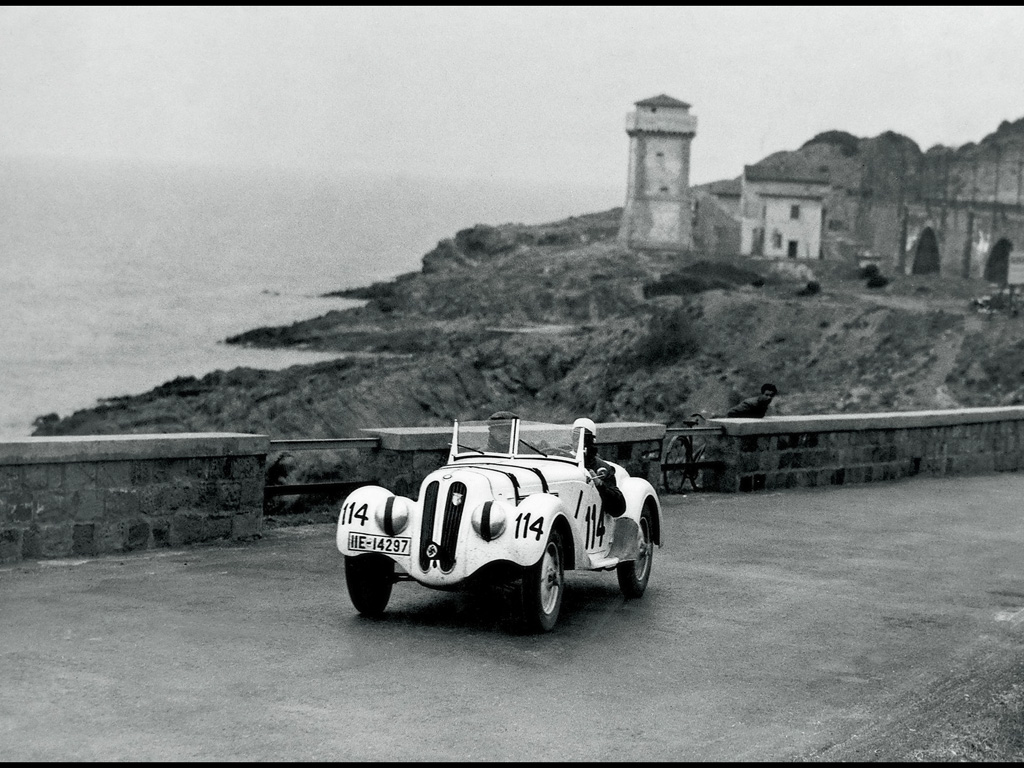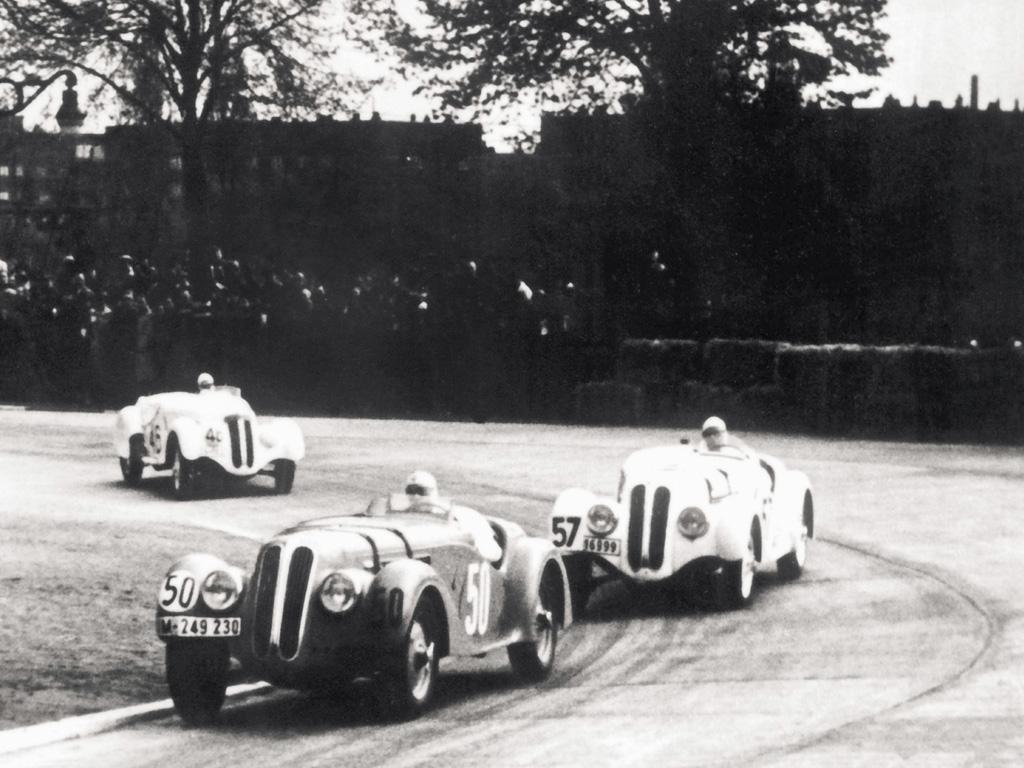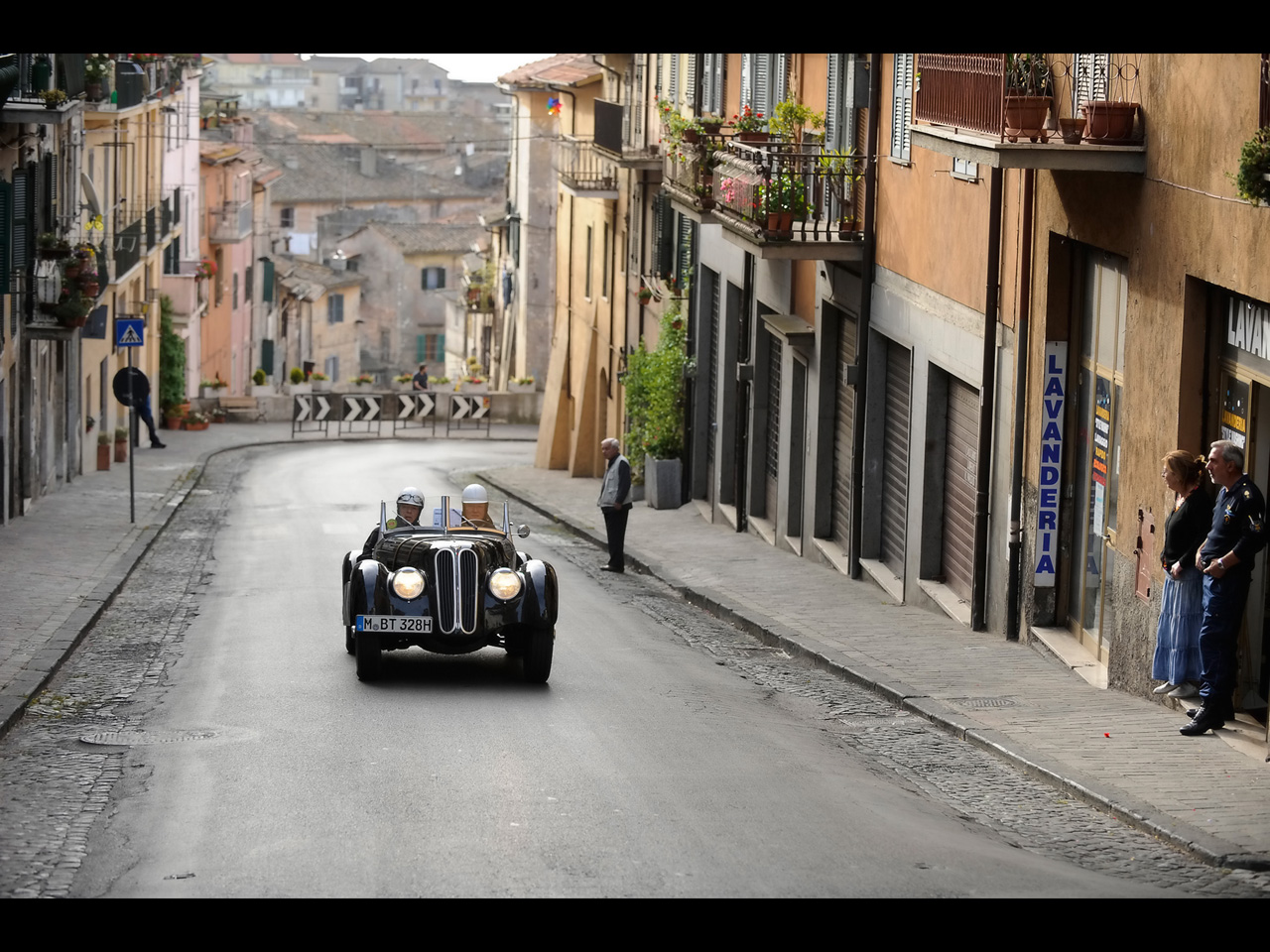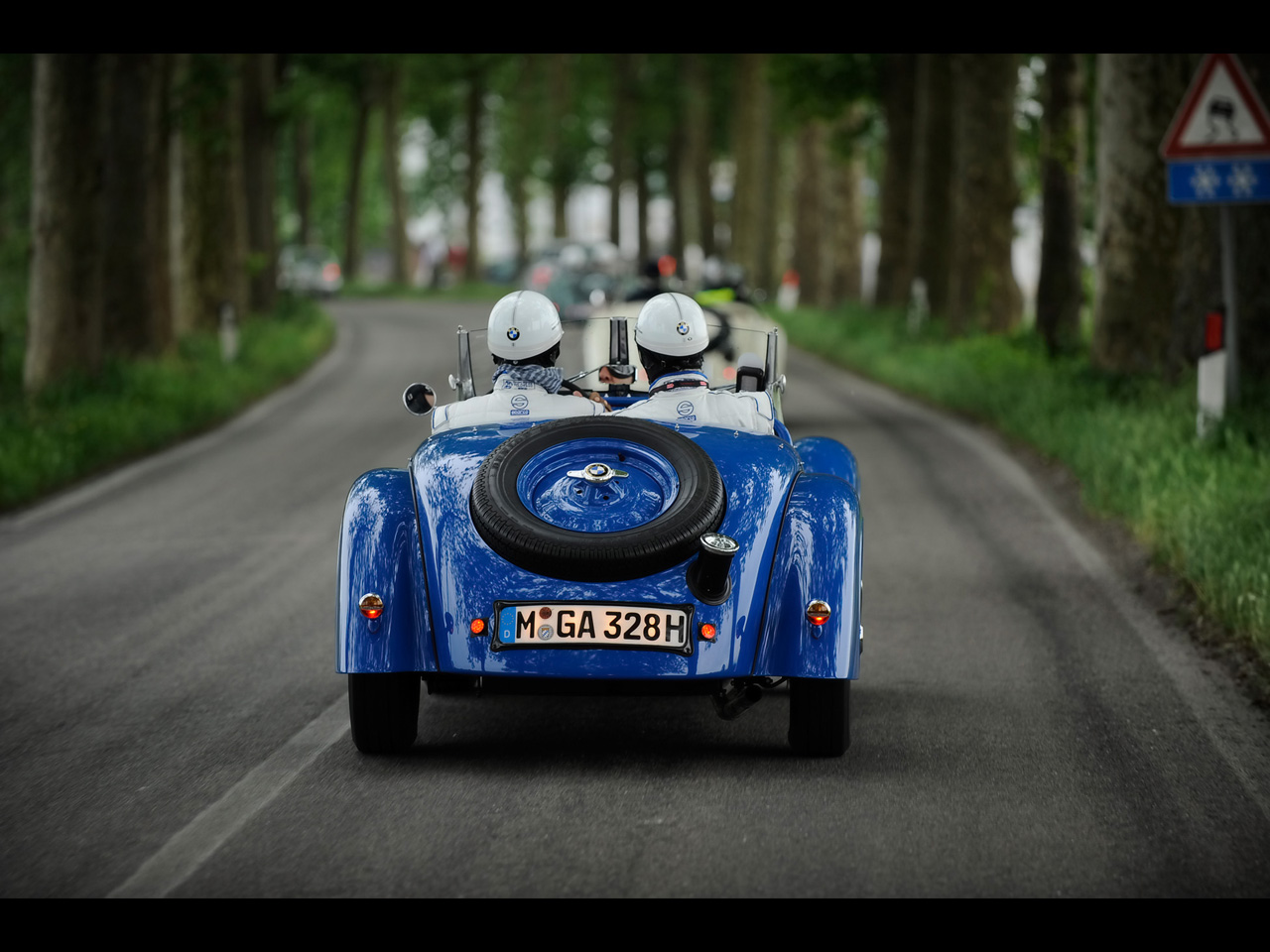1937-1939 BMW 328
|
Price |
-- |
Production |
464 (roadster) | ||
|
Engine |
2 liter inline-6 |
Weight |
1720 lbs | ||
|
Aspiration |
natural |
Torque |
-- | ||
|
HP |
80 hp @ 4500 rpm (roadster) |
HP/Weight |
21.5 hp per liter | ||
|
HP/Liter |
40 hp per liter |
1/4 mile |
-- | ||
|
0-62 mph |
-- |
Top Speed |
96 mph |
(from BMW Press Release) The climax of the pre-war era: the BMW 328 Roadster.
In the mid-30s,
production roadsters and competition cars were still very similar in
technical terms – and motorsport was still the ideal place to prove
the performance and reliability of a production car. But to keep up
with the competition, BMW soon had to build cars with more power and
muscle. So BMW’s engineers looked for ways and means to
significantly increase engine output without increasing engine size.
And they found the solution – the M328, the engine powering the
legendary BMW 328 sports car in 1936.
Right from the start in its debut at Nürburgring on 14 June 1936,
BMW’s new roadster literally pulverised even the most powerful
supercharged competitors. This outstanding success was attributable
to the well-balanced combination of superior engine power and
cutting-edge suspension technology characteristic of BMW roadsters
to this day: 80 hp in the regular version and low weight of just 830
kg or 1,830 lb gave this elegant roadster superior performance still
impressive today.
With the BMW 328 Roadster initially being restricted to motorsport
as of mid-1936, production of the series model started in spring
1937. And so this high-performance sports car was driven not only by
BMW’s works drivers, but also by private customers since, over and
above racing, it was very well suited for everyday use. And with its
top speed of 155 km/h or 96 mph, this was indeed one of the fastest
cars on the road back then.
But again, the BMW 328 Roadster remained a very rare bird, with only
464 units of this classic roadster being built up to 1940.
BMW 328 Berlin-Rome Touring Roadster.
In the hope of competing in the Berlin-Rome race scheduled for 1941, Germany's National Sports Authority had three existing BMW Roadsters fitted with more advanced aerodynamic roadster bodies by Carrozzeria Touring of Milan. What ultimately emerged were racing cars that boasted an outstandingly good drag coefficient for the time. The events of the Second World War, however, put paid to any further motor racing events with German involvement.
Year of construction
1937 chassis, 1941 body
Engine 6-cylinder in-line
Displacement 1971 cc
Bore x Stroke 66 x 96 mm
Power output 136 bhp at 6000 rpm
Gearbox 4-speed
Brakes Alfin drums, vented brake back plates
Weight 780 kg
Max. speed 200 km/h (125 mph)
BMW 328.
The 328 Roadster,
developed in 1935/36, is one of the legends of automobile history.
Although only modest facilities were available, the result was a
sports car of most attractive appearance that soon dominated the
two-litre class. Modified competition versions won their classes at
Le Mans and in the Mille Miglia. Of the 464 cars that were built,
403 had the standard roadster body, the remaining chassis being used
for racing versions or special bodywork
ordered by customers.
Construction period
1936 - 1940
Quantity 464
Engine Six-cylinder in-line engine
Displacement 1971 cc
Bore x Stroke 66 x 96 mm
Power output 80 bhp at 4500 rpm
Transmission Four-speed, central shift
Front brakes Hydraulic drum brakes
Rear brakes Hydraulic drum brakes
Dimensions 3900 x 1550 x 1400 mm
Unladen weight 780 kg
Max. speed 155 km/h
BMW 328 Touring Coupé.
The company Touring in Milan built a particularly light-weight "superleggera" coupé body on the BMW 328 chassis for use in fast long-distance races. The improved aerodynamics were intended to achieve much higher speeds. The car was first used in June 1939 in the 24-hour race at Le Mans. Max Prinz zu Schaumburg-Lippe and Hans Wencher won the 2-litre sports-car class in a new record time and came 5th in the overall placings. In April 1940, the car driven by Fritz Huschke von Hanstein and Walter Bäumer won a commanding overall victory in the Mille Miglia. Successes and the overall concept make this vehicle a unique racing legend.
Year of construction
1939
Engine Six-cylinder in-line engine
Displacement 1971 cc
Bore x Stroke 66 x 96 mm
Power output 136 bhp at 6000 rpm
Gearbox Four-speed
Brakes Alfin drums, vented brake, back plates
Weight 780 kg
Max. speed 220 km/h (137 mph)
BMW 328 Mille Miglia Roadster.
For lack of time, two of the three BMW 328 Roadster models scheduled to compete in the 1st Gran Premio Brescia delle Mille Miglia of 1940 had their bodywork built not in Munich, but by coachbuilders Touring of Milan on the basis of BMW designs. Like the BMW 328 Coupé, this aerodynamically advanced, ultra-lightweight body consisted of a tubular space frame with an aluminium skin. The team behind the wheel of this car comprised Willy Briem and Uli Richter, who propelled it to an outstanding fifth place overall in the 1940 Mille Miglia and thus played a key role in securing the team prize for BMW.
Year of construction
1940
Engine 6-cylinder in-line
Displacement 1971 cc
Bore x Stroke 66 x 96 mm
Power output 130 bhp at 5750 rpm
Gearbox 4-speed
Brakes Alfin drums, vented brake, back plates
Weight 700 kg
Max. speed 200 km/h (125 mph)



